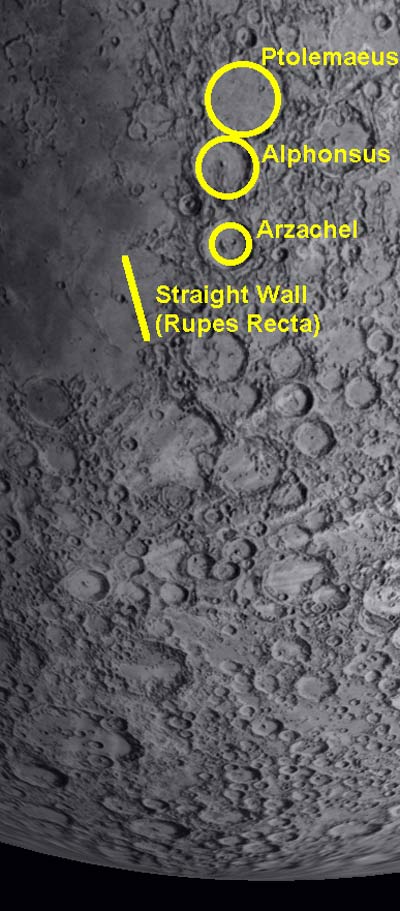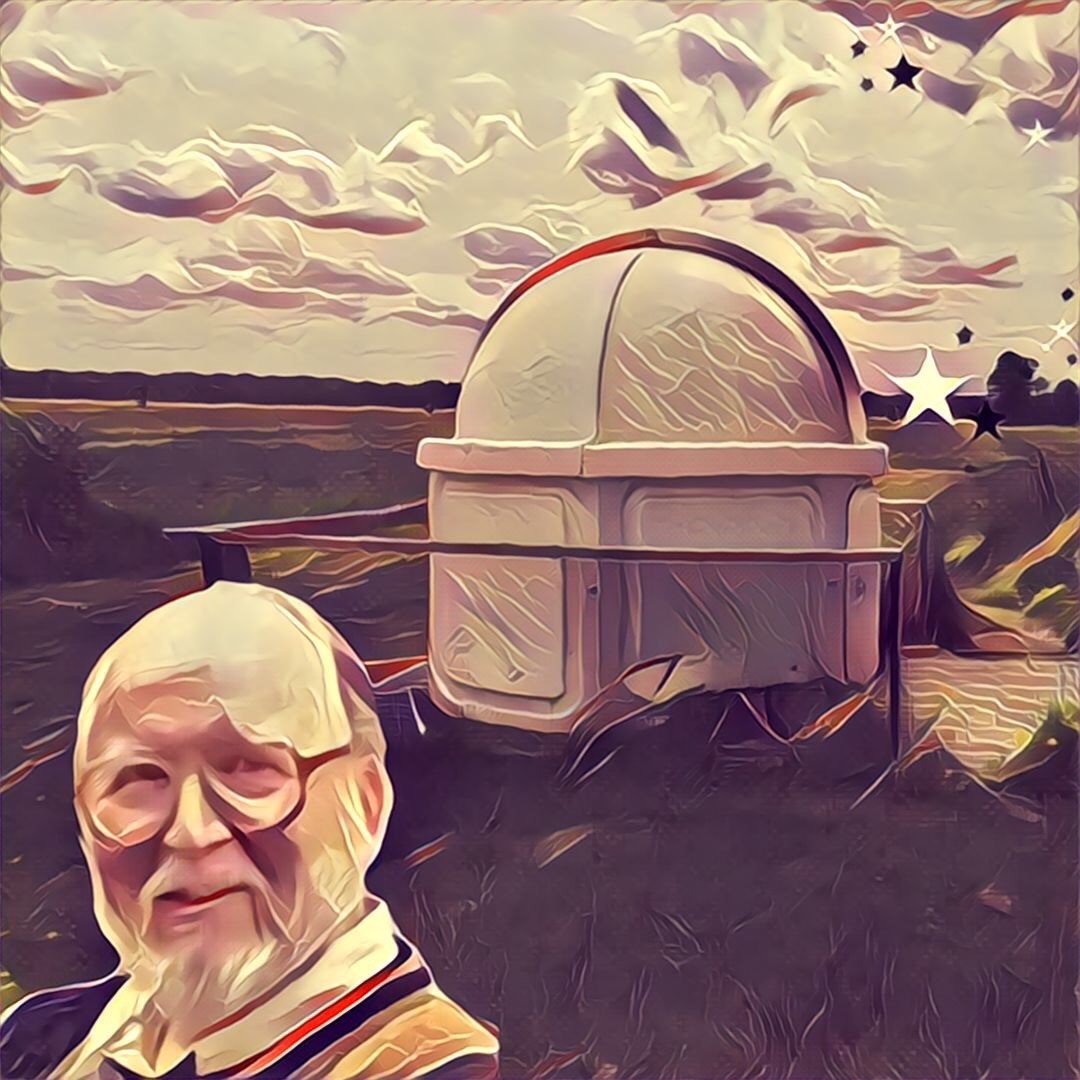The Moon's Great, Straight Wall Gets Solar Spotlight

On Thursday night, April 22, the sun will rise over the oneof the most spectacular topographic features on the moon ? the Straight Wall ?giving skywatchers a good chance to spot the lunar marvel.
The moon is the only astronomical body on whichtopographical features can be seen in detail with small telescopes or evenbinoculars. It is fascinating to watch the sunlight playing on these featuresas themoon rotates.
To locate the Straight Wall (or Rupes Recta, as it?sformally known in Latin) first look for the trio of large craters right in thecenter of the terminator, the line dividing light and shadow on the moon?ssurface: Ptolemaeus, Alphonsus, and Arzachel. Just to the southwest of Arzachelis a large ruined crater, flooded by lava from the Mare Nubium. The StraightWall is a huge fault crossing this ghost crater. [See the moon's Straight Wall.]
At this time in the lunar month, the Straight Wall, 68miles (110 km) long, casts a wide shadow. Despite this, it is really not veryhigh, ranging from 800 to 1,000 feet (240?300 meters) in height. Heights ofobjects close to the terminator are often exaggerated by the glancing rays ofthe sun.
Although the slope of this fault line looks steep, it isreally quite gentle compared to similar fault lines on Earth, only about sevendegrees. A cluster of hills at the southern end of the Straight Wall oftenlooks like the handle of a sword, the blade being formed by the Straight Wallitself. Just to the west of the Straight all is the small but deep crater Birt,which is 11 miles (17 km) in diameter and 11,400 feet (3,470 meters) deep.
It will be interesting to look at this area again in alittle under two weeks, on the morning of May 6, when the sun is setting on theStraight Wall. The face of the wall, currently in shadow, will then be bathedin the light of the settingsun, a brilliant white line instead of the current black one.
- Images - Full Moon Fever
- How Lunar Eclipses Work
- More Night Sky Features from Starry Night Education
This article was provided to SPACE.com by Starry Night Education, theleader in space science curriculum solutions.
Breaking space news, the latest updates on rocket launches, skywatching events and more!

Geoff Gaherty was Space.com's Night Sky columnist and in partnership with Starry Night software and a dedicated amateur astronomer who sought to share the wonders of the night sky with the world. Based in Canada, Geoff studied mathematics and physics at McGill University and earned a Ph.D. in anthropology from the University of Toronto, all while pursuing a passion for the night sky and serving as an astronomy communicator. He credited a partial solar eclipse observed in 1946 (at age 5) and his 1957 sighting of the Comet Arend-Roland as a teenager for sparking his interest in amateur astronomy. In 2008, Geoff won the Chant Medal from the Royal Astronomical Society of Canada, an award given to a Canadian amateur astronomer in recognition of their lifetime achievements. Sadly, Geoff passed away July 7, 2016 due to complications from a kidney transplant, but his legacy continues at Starry Night.
